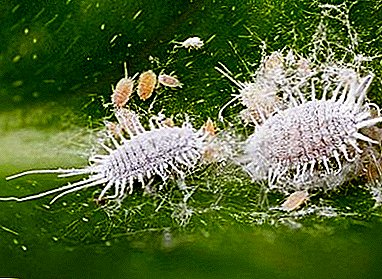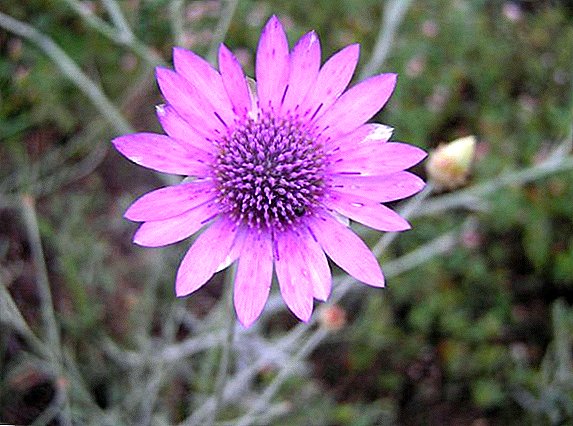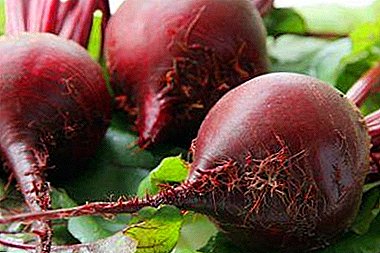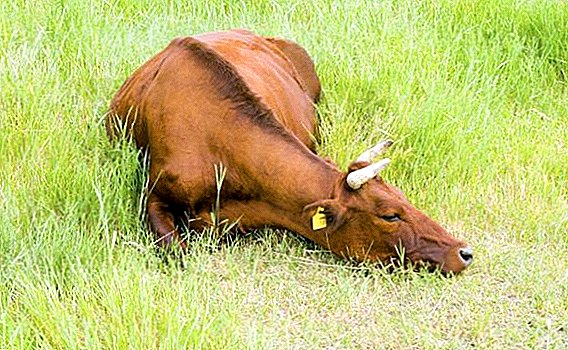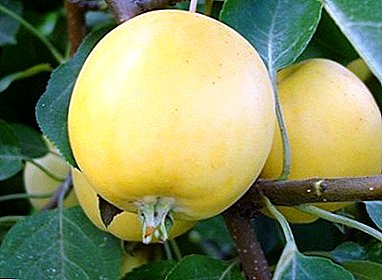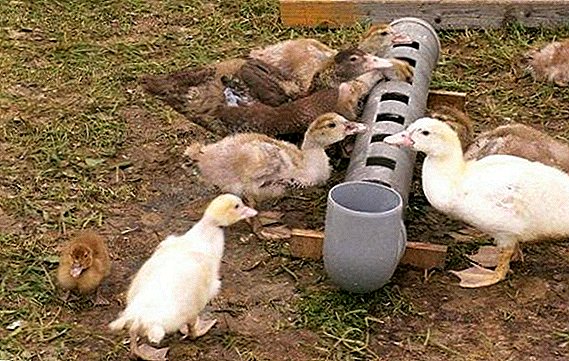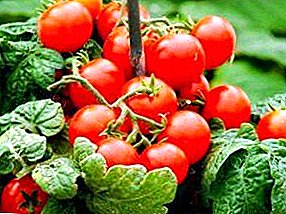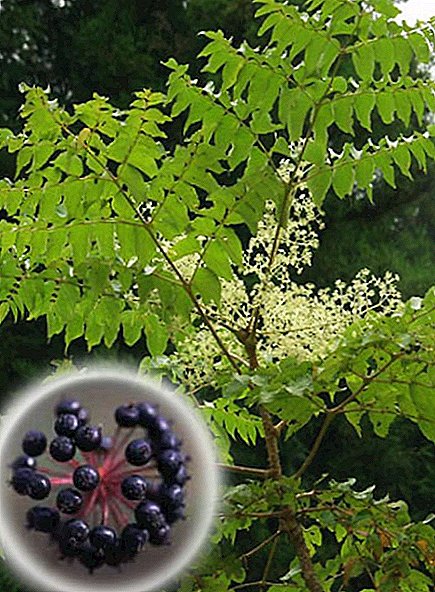 Information about the Aralia of Manchu can be found both on the Internet and on the pages of specialized journals. But basically there are described its useful properties and recipes for the preparation of healing tinctures. Unfortunately, there is little information about the nuances of cultivating this plant. Therefore, we decided to talk about the cultivation of Aralia Manchu.
Information about the Aralia of Manchu can be found both on the Internet and on the pages of specialized journals. But basically there are described its useful properties and recipes for the preparation of healing tinctures. Unfortunately, there is little information about the nuances of cultivating this plant. Therefore, we decided to talk about the cultivation of Aralia Manchu.
Botanical description
It looks like a shrub or a small tree that grows up to 3-7 m (sometimes up to 12 m). The trunk and branches of gray, dotted with sharp thorns. The plant is capable of vegetative reproduction.
The leaves are green, large, delicate, the crown forms a spherical dome. During flowering at the top of the trunk appear cream or white flowers, collected in large umbrella inflorescences. In the fall, blue-black fruits ripen on the shrubs, and the foliage turns red.
Did you know? The life of a modern person depends on the use of more than one and a half thousand cultivated plants.
The natural habitat is the deciduous and diverse forests of Primorye, southern Sakhalin, the Amur region, the Kuril Islands. Successfully grown on an industrial scale in the Primorsky and Khabarovsk region. 
Kinds
The genus Aralia L. has 35 species of trees, shrubs and perennial herbs. On the territory of the Russian Federation only 3 species grow, including Manchurian Aralia (high), the largest of all.
There are several varieties of aralia:
- low deciduous trees;
- multiple shrubs;
- perennial large herbs.
Most often cultivated such types of aralia:
- Manchu (Aralia elata or Aralia mandshurica). Good honey plant.
In addition to Aralia Manchu, good honey plants also include: clover, bruise, cilantro, reseda, bird cherry, acacia, mordovnik sharogolovy, mint, sunflower, canola, linden, lungwort, heather, oregano, phacelia.
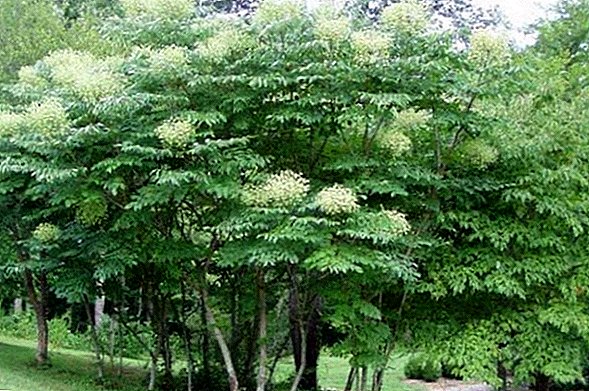
- Heart-shaped or Schmidt (Aralia cordata or Aralia schmidtiana). Herbaceous appearance with succulent leaves and a fleshy, fragrant rhizome.
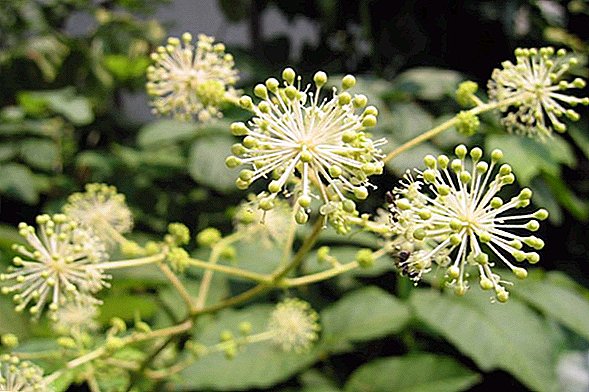
Breeding
There are several ways of planting and breeding Aralia Manchu:
- seminal,
- cuttings
- understory
Therefore, every gardener can choose for himself one that is convenient to him.
Seeds
The most common method of sowing - seed. To do this, take the freshly harvested material, which has good germination. Seeds are planted at the end of summer - beginning of autumn in the previously fed soil. Depth of landing - 1.5-2 cm (not more).
Important! Germination of seeds of aralia lasts for 1.5 years.
 Seeds of Aralia Manchu
Seeds of Aralia ManchuThe distance between the holes should be 40-60 cm. Per square meter is enough 1 g of seeds. Before planting, add 3 kg of humus and 20-30 g of nitrophoska to each hole. On top of the seedlings are covered with humus.
To increase the germination of seed, it is soaked for a day in a solution of gibberellic acid at the rate of 0.5 g per liter of water.
You can plant seeds in the spring, but then the seed before planting will have to be stratified: to withstand 3-4 months at a temperature of 14-20 ° C and 4 months - at 2-5 ° C, and seedlings will appear later, only after 7-8 months.
To speed up the process, it is recommended to soak the seeds in gibberellic acid for two days (concentration - 0.005%) and shorten the stratification process, observing the following conditions:
- 0-5 ° C - 30-90 days;
- 18-20 ° C - 60 days.

Cuttings
Planting of plants by grafts can also be considered a simple process. For this, branches of at least 1 cm thick are cut to a length of 15 cm. All the time before planting, the cuttings are protected from drying out.
Plants are planted until the buds bloom to a depth of 15-20 cm, at a distance of 60-80 cm from each other, well watered, mulched and covered from the sun (for example, with shields). After the first leaves appear on the cuttings, the bush begins to be gradually accustomed to sunlight.
Did you know? The smallest flower in the world is the duckweed. For many years, it was considered algae, but then discovered inflorescences. Scientists still can not understand how this amazing plant doubles per day, and in a week it can cover the entire surface of a reservoir.
In medicine, aralia has been used recently, since its properties have been studied only as a result of the search for a substitute for ginseng. 
Offshoots
For those who are not ready to wait for a long time, until the seeds hatch and the cuttings take root, there is another way of reproduction - root suckers. They have a good root system and are easily separated from the parent bush.
Children are ready for transplantation when they grow to 25-30 cm. High-quality offspring should not have damaged roots. If the root system is intact, and there are no dark spots on the seedling itself, indicating frostbite, it can be planted.
For planting offsprings in the spring (before the appearance of the seed) or in the autumn (after the leaves fall), dig holes 40-50 cm deep and 60-70 cm wide. Fertile soil (15-25 cm) is poured at the bottom and planted by the child, straightening its roots. After that, the sprout is mulched with a layer of peat powder 2 cm thick and covered with a hole. 
Plant Care
Care for Aralia is easy. Particular attention should be paid to the plant only in the first year after planting.
Lighting
On an area with hot summer and low humidity, it is advisable to choose a landing site with such an arrangement that the aralia in the sun is up to 11-12 hours, and with increasing luminous aggressiveness - in the shade.
Important! Despite the fact that Aralia is not afraid of sunny places, in the open sun its leaves can burn and curl.
Temperature
In its natural habitat, Aralia Manchu tolerates frosts down to -30 ° C, but the young can freeze in the first 2-3 years of life. This is due to frequent temperature fluctuations, when severe frosts replace thaws. Therefore, young seedlings are better protected for the winter. When the shrub grows to 1.5 m, the freezing of the shoots will stop. 
The soil
It is better to choose a fertile, light and well-drained soil. Then the cultivation will not cause difficulties, and the bush will please a healthy look. The soil should be moderate acidity, pH 5-6. The plant reacts negatively to alkaline and loamy lands.
We recommend reading on how to independently determine the acidity of the soil, as well as how to deoxidize the soil on the site.
Watering
Since the roots of the shrub are close to the soil surface, the plant is not able to fully receive moisture from underground sources and needs watering. This procedure is especially relevant during the period of fruit ripening and in the first year after planting - up to three times a week.
Humidity
Aralia loves moisture, but does not tolerate stagnant water. Because of this, the plant can cause various diseases. It can be cultivated with low atmospheric humidity. 
Top dressing
Adult shrubs need regular fertilizers:
- In the spring make organic and mineral substances. In the first year - 20-30 g of mineral fertilizers for bush and mullein (rotted manure), diluted with water.
- In the summer, when buds are tied, they are fed with slurry.
- Repeat top dressing in autumn, after picking the fruit.
Pruning
As the shrub grows, it is necessary to shape the plant, removing excess shoots as well as diseased, damaged and dry branches as sanitary care.
Application
Aralia Manchu successfully used as a fast-growing ornamental plant.
If you want to decorate your plot with fast-growing ornamental plants, we advise you to familiarize yourself with the nuances of growing thuja, boxwood, thorns, hawthorn, forsythia, privet, yew and barberry of Thunberg.
Moreover, it is suitable for both single and group compositions, as well as hedges.  You can plant a shrub near the apiary - Aralia is a wonderful honey plant. The plant also has healing properties. In alternative (and traditional) medicine, the roots of Aralia are used.
You can plant a shrub near the apiary - Aralia is a wonderful honey plant. The plant also has healing properties. In alternative (and traditional) medicine, the roots of Aralia are used.
They contain:
- triterpene saponins;
- glycosides of aralosides A, B, C;
- starch;
- essential oils;
- alkaloid aralin;
- resin.
Tinctures from the roots of aralia are used as a tonic and regenerating agent for the central nervous system. Infusions based on aralia with atherosclerosis, diabetes mellitus, brain sclerosis, and schizophrenia help.
Important! Before you start using drugs from Aralia Manchu, you need to consult a doctor.

Difficulties in growing
Breeding Aralia does not require much effort, since the main care is in the usual things for the gardener: regular watering, feeding, removing weeds.
True, for gardeners there are a few tips:
- Young seedlings mulch to protect against weathering, freezing and washing out of the soil, as well as to protect against weeds. Good material for mulch are: foam, needles, sawdust, hay, peat, bark, cardboard, straw.
- Since the roots of aralia grow horizontally, it is recommended to plant it along the tracks. If you break this rule, in a few years the bush will interfere with the passage.
- When loosening the soil is worth remembering that the roots are close to the surface, so you need to loosen carefully.
Diseases and pests
Aralia has a stable resistance to frost and fungi, but its roots and foliage are completely powerless against the following pests:
- Wireworm. An annoying pest, to get rid of which completely will turn out only in 2-3 years.
 To combat it, use a set of activities: ash, siderata, bait - everything that spoils the appetite of the insect.
To combat it, use a set of activities: ash, siderata, bait - everything that spoils the appetite of the insect.We advise you to read about what siderats are and when to plant them.
- The larvae of the May beetle. Recognizing them is simple: the main sign is the causeless wilting of the plant. It is possible to fight with the pest only in a complex way: nitrogen, white clover, traps, insecticides ("Basudin", "Aktara", etc.).

- Slugs These soft-bodied pests destroy greens. They can be collected by hand, use a strong saline, soap solution or toxic chemicals.
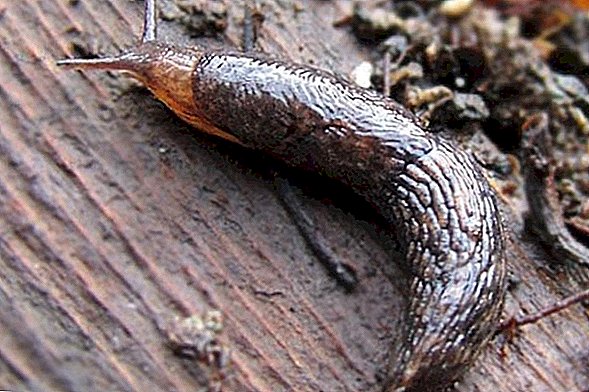
- Medvedka. To get rid of this pest is recommended to arrange on the site "manure traps", which will crawl insects. In some cases, use chemicals and bait.





 To combat it, use a set of activities: ash, siderata, bait - everything that spoils the appetite of the insect.
To combat it, use a set of activities: ash, siderata, bait - everything that spoils the appetite of the insect.




